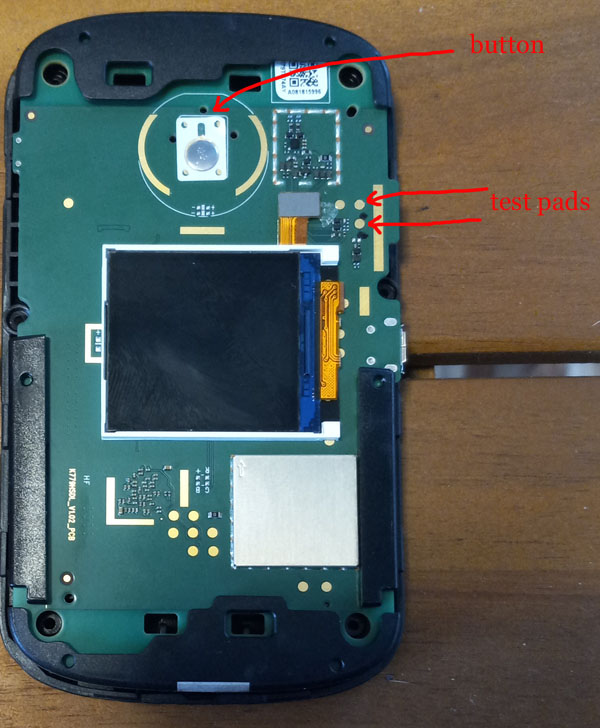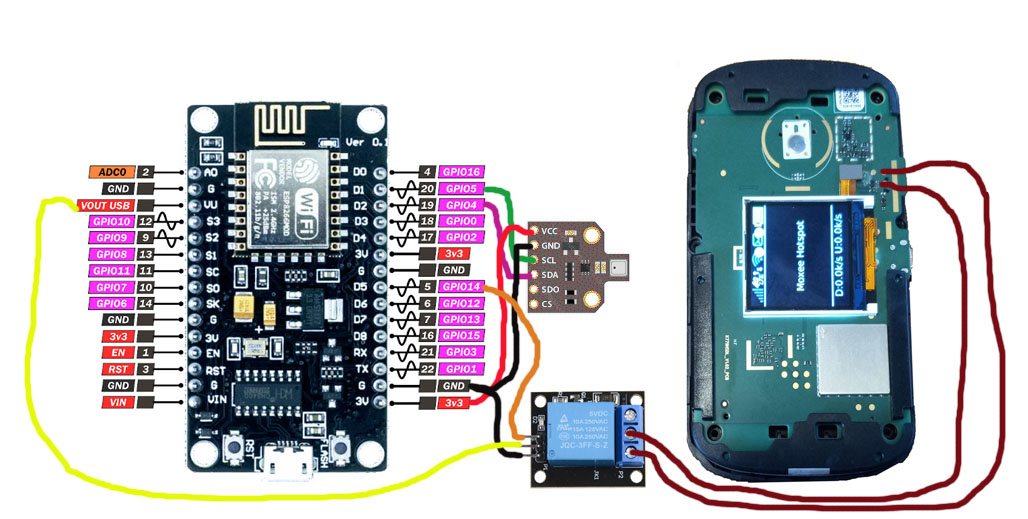The reason for this project was that I have internet provided at a remote off-grid cabin via a cellular hotspot made by a company named Moxee (the cellular provider is Cricket, which works better than Verizon in the southern Adirondacks). The Moxee device works okay when it works, but occasionally something will happen and the hotspot loses its connection. At that point, the only way to restore service is to manually reboot the hotspot. This normally requires an actual human being to be in the cabin and to know what to do. This is inconvenient if it's in the middle of winter and I am on a beach in Costa Rica. So I wanted a mechanism to automatically reboot the Moxee hotspot whenever it fails to provide internet to a wireless device located nearby. A good place to start with this project was my ESP8266-based Micro-Weather project (https://github.com/judasgutenberg/ESP8266-Micro-Weather), which already consists of a device that connects to the internet to log weather data.
This version of that system does a number of things differently.
- It uses the BME680 environment sensor to monitor temperature, pressure, humidity, and gas characteristics. I've had to alter the backend to log the gas information along with the weather data.
- It checks the network and if it cannot connect to its server or get a WiFi connection, it pulses line #D5 (digital line 14 for some reason) on the ESP8266 a couple times using a pattern I experimentally arrived at. Driving a relay that bridges the power button wires on the Moxee hotspot, this will reset the Moxee and make it connect. This means I do not have to drive to my cabin to reset the hotspot every time it craps out or otherwise gets confused. This makes it possible to reliably monitor the many sources of data that my cabin generates.
The Moxeee hotspot is easily disassembled if you have a tiny phillips-head screwdriver and perhaps some spudgers. Pop off the plastic back plate, remove the battery, and look in the back for six tiny screws that hold the chassis to the front. One of the six screws has a white paper tab on its head to tell Moxee that you've broken into their device, which you very much need to do to do what I did. Then you can use a spudger to remove the front from the Moxee and see the following:
In this photo you see the labeled power button and the two test pads I found (using the continuity testing feature of a multimeter) that carry the signals bridged by that button. Solder wires onto those pads and run them out of your Moxee so you can simulate pressing the power button. If you use the Arduino sketch to drive a relay attached to those two pads, your Moxee hotspot will be reset whenever it becomes uncommunicative, saving you hours of driving to your cabin or even having to think about it.
Using the NodeMCU ESP8266 board, the BME680 board, a relay board, and the Moxee, the wiring will look like this:
A good way to test if this system is working once constructed is to place the Moxee hotspot inside two stainless steel mixing bowls (arranged like the shells of a clam with the cables coming out). This will act like a Faraday cage, blocking all wireless signals. And then, next time the ESP8266 attempts to upload data, you will hear the sound of the relay clicking to reset the Moxee (assuming you used a mechanical relay).
To be clear, regarding the files in this repository, the three PHP files belong on a web server you control that runs PHP and MySQL. You will need to change config.php to put your MySQL login information in there and create a table called weather_data by running weather.sql. The .ino and .h files go into a directory together in your Arduino sketch directory so you can write them to whatever board you have that is Arduino-compatible and has WiFi (I used a NodeMCU built around a ESP8266). The two images are just to illustrate this README file.
Possible changes: using an optoisolator instead of a relay, as this application does not require a zero-ohm-in-both-directions switch to bridge the Moxee power button signals.

